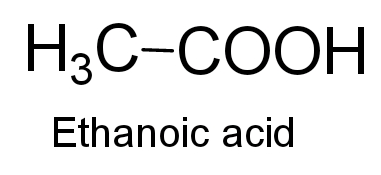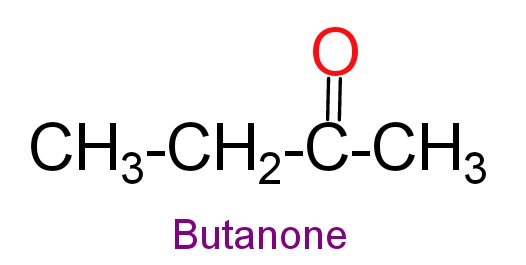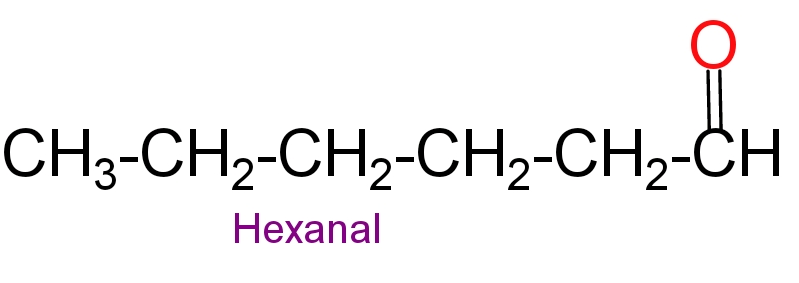
Draw the structure for the following compounds
(i) Ethanoic acid
(ii) Bromopentane
(iii) Butanone
(iv) Hexanal
Answer
552k+ views
Hint: Chemical structure of an organic compound represents the actual number of atoms, nature of bond (saturated or unsaturated) and functional group present in one molecule of the compound i.e., it shows the real formula of its one molecule.
Naming of organic compounds is determined according to the naming guideline of IUPAC (stands for International Union of Pure and Applied Chemistry).
Suffix$\text{-ane}$ is used in the IUPAC naming of alkane, and suffix$\text{-oic}\,\text{acid}$ is used in the IUPAC naming of carboxylic acids having functional group $\text{(-COOH)}$.
Suffix$\text{-al}$ is used in the naming of aldehyde having functional group $\text{(-CHO)}$, while Suffix$\text{-one}$is used in the IUPAC naming of ketone having functional group$\text{-(C=O)-}$.
Complete answer:
(i)

(ii)

(iii)

(iv)

Additional information:
In compound Ethanoic acid, ethane represents the two carbon word root and suffix -oic represents this is a carboxylic compound.
In compound Bromopentane, bromo-prefix is used for the halogen atom bromine and pentane represents the ${{\text{C}}_{\text{5}}}$ (five carbon) word root of the compound. There is no functional group in this compound.
In compound Butanone, buta- prefix represents the four carbon word roots of the compound and Suffix$\text{-one}$used for ketone functional groups.
In this compound Hexanal, hexa- prefix represents the six carbon word root of the compound and Suffix$\text{-al}$ represents this aldehyde compound.
Note:
IUPAC name of an organic compound consists of prefix, word root and suffix. Prefix is used before the word root and it denotes the substituent and non-functional group attached to the organic compound. The word root indicates the number of carbon present in the longest continuous parent chain and suffix indicates the functional group present in the organic compound.
If a carbon containing functional group is present, this carbon atom will also count in the parent chain.
Naming of organic compounds is determined according to the naming guideline of IUPAC (stands for International Union of Pure and Applied Chemistry).
Suffix$\text{-ane}$ is used in the IUPAC naming of alkane, and suffix$\text{-oic}\,\text{acid}$ is used in the IUPAC naming of carboxylic acids having functional group $\text{(-COOH)}$.
Suffix$\text{-al}$ is used in the naming of aldehyde having functional group $\text{(-CHO)}$, while Suffix$\text{-one}$is used in the IUPAC naming of ketone having functional group$\text{-(C=O)-}$.
Complete answer:
(i)

(ii)

(iii)

(iv)

Additional information:
In compound Ethanoic acid, ethane represents the two carbon word root and suffix -oic represents this is a carboxylic compound.
In compound Bromopentane, bromo-prefix is used for the halogen atom bromine and pentane represents the ${{\text{C}}_{\text{5}}}$ (five carbon) word root of the compound. There is no functional group in this compound.
In compound Butanone, buta- prefix represents the four carbon word roots of the compound and Suffix$\text{-one}$used for ketone functional groups.
In this compound Hexanal, hexa- prefix represents the six carbon word root of the compound and Suffix$\text{-al}$ represents this aldehyde compound.
Note:
IUPAC name of an organic compound consists of prefix, word root and suffix. Prefix is used before the word root and it denotes the substituent and non-functional group attached to the organic compound. The word root indicates the number of carbon present in the longest continuous parent chain and suffix indicates the functional group present in the organic compound.
If a carbon containing functional group is present, this carbon atom will also count in the parent chain.
Recently Updated Pages
Master Class 11 Economics: Engaging Questions & Answers for Success

Master Class 11 English: Engaging Questions & Answers for Success

Master Class 11 Social Science: Engaging Questions & Answers for Success

Master Class 11 Biology: Engaging Questions & Answers for Success

Class 11 Question and Answer - Your Ultimate Solutions Guide

Master Class 11 Business Studies: Engaging Questions & Answers for Success

Trending doubts
What is meant by exothermic and endothermic reactions class 11 chemistry CBSE

10 examples of friction in our daily life

One Metric ton is equal to kg A 10000 B 1000 C 100 class 11 physics CBSE

Difference Between Prokaryotic Cells and Eukaryotic Cells

What are Quantum numbers Explain the quantum number class 11 chemistry CBSE

1 Quintal is equal to a 110 kg b 10 kg c 100kg d 1000 class 11 physics CBSE




